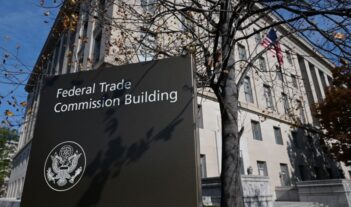
Revised Green Guides address deceptive environmental claims.
The Federal Trade Commission (FTC) recently revised its so-called Green Guides, which provide guidance to businesses about avoiding deceptive claims about environmental features of services or products, such as their recycled content or their lack of toxic ingredients.
The FTC’s guides apply to environmental claims made in all kinds of marketing to individuals or businesses, whether in product labels, advertising, or any other kind of “promotional materials” about a product or service. According to FTC Chairman Jon Leibowitz, the agency’s recent revisions aim to “level the playing field for honest business people.”
Although the FTC’s guides do not provide private individuals or businesses with an enforceable right against violators, the FTC can take action under the Federal Trade Commission Act against a party that makes unfair or deceptive environmental claims. According to the revised guides, the FTC Act treats as deceptive those representations, omissions, or practices which are likely to mislead reasonable consumers and which are “material to consumers’ decisions.”
Before making environmental claims, marketers are required to ensure that reasonable interpretations of such claims are “truthful, not misleading, and supported by a reasonable basis.” According to the guides, a reasonable basis for a claim will many times require a showing of “competent and reliable scientific evidence.”
Throughout the guides, the FTC provides examples intended to explain how reasonable consumers in either a general or a targeted audience are likely to interpret environmental claims. A claim may be considered deceptive, the agency says, based on an evaluation of the “net impression of the advertisement, label, or other promotional material at issue.”
The guides provide principles generally applicable to environmental claims used in marketing. For instance, they state that any qualification and disclosure about a product should be “clear, prominent, and understandable” and make use of plain and consistent language. Claims should also make clear whether they apply to a product or service in whole or in part and should not exaggerate the environmental benefits associated with a product. Claims that compare two products as to a particular harm or benefit should be substantiated.
According to the guides, marketers should avoid general claims of environmental benefit because without qualification such claims are likely to lead to a wide range of reasonable interpretations, some which may be unsubstantiated. Instead, such claims should be qualified and limited to substantiated benefits.
The FTC advises that marketers citing third-party environmental certifications or seals of approval are still required to substantiate environmental claims. Furthermore, such third-party statements should follow the FTC’s endorsement guides. To avoid misleading general claims of environmental benefit, the revised guides tell marketers to use only third-party approvals that cite a basis for certification.
The FTC also provides specific guidance as to the use of particular environmental claims, such as those pertaining to carbon offsets or claims that a product or package is compostable, degradable, or free of certain substances. The guides state that claims that a product is not toxic require the support of reliable evidence showing that the product is not toxic to both humans and the environment to avoid misrepresentation.
According to the FTC guides, all claims without qualification that a product, service, or package is “ozone-friendly” or safe for the atmosphere are deceptive.
The guides define parameters for when a product or package can be labeled as recyclable or containing recycled materials. According to the FTC, it is deceptive to claim a package is reusable when the manufacturer has not provided a system by which a consumer can refill the product. The guides state that it could be deceptive to make general claims that a product or package was made with renewable energy or is made with “renewable materials,” unless these claims can be substantiated or qualified.
The guides also state that a product’s or package’s weight, volume, or toxicity has been reduced without clearly qualifying such claims so as to avoid deception about the size of such reductions.
The FTC’s “Green Guides” were originally issued in 1992 and subsequently revised in 1996 and 1998. In 2010, the FTC proposed modifications to the guides and sought public comment on changes. According to the FTC, this most recent revision of the Guides reflects input received from industry players, consumers, and participants at public workshops.



